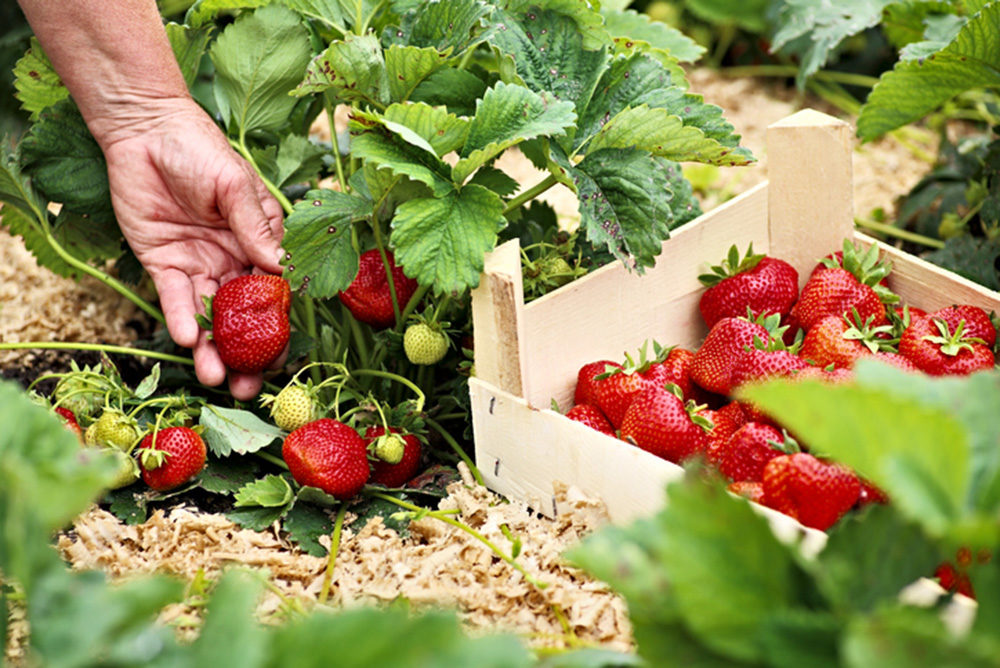
iStock
IF THERE WERE EVER a reason to switch to eating organic, a compelling one would be avoiding foods associated with weight gain or that contribute to skin problems (including acne and aging skin).
Obesogens are a subset of endocrine-disrupting chemicals (EDCs), which mimic, block or interfere with the body’s natural hormones; they include any chemical introduced into food with the potential to predispose people to gain weight and have a hard time taking it off. They have “emerged as one of the most urgent threats to global public health,” according to the Endocrine Society.
“Even those at the lower end of the BMI [body mass index] curve are gaining weight,” notes UCSF clinical pediatrics professor Robert Lustig. “Whatever is happening is happening to everyone, suggesting an environmental trigger.” And while most research on obesogens has been done on animals, and mostly in the pre- and peri-natal periods, the National institutes of Health Strategic Plan for Obesity Research has acknowledged the “role of environmental chemicals in obesity.”
Food-additive obesogens include artificial sweeteners, preservatives and added sugars. Other common obseogens show up in food from chemicals like bisphenol A (BPA) used in packaging—especially plastic wrappings and can linings—as well as from pesticides and fungicides sprayed on conventionally grown fruit and vegetables.
For the past three years, strawberries topped the “Dirty Dozen” list of foods most affected by obesogens, created annually by the Environmental Working Group—with one strawberry sample containing as many as 20 different pesticides. Next on the list: spinach, nectarines, apples, grapes, peaches, cherries, pears, celery, potatoes and sweet bell peppers.
Other foods with high pesticide content include lettuce, cucumbers and even kale. In addition, growth hormones and steroids, as well as antibiotics, accumulate in the fat of conventionally raised animals and farm-raised salmon. And one study traced high levels of urinary EDCs to ground cinnamon and cayenne pepper.
Obesogens interfere with the hormone estrogen, which in adults protects against abdominal obesity. The most serious effects are in adipose tissue, which releases hormones related to appetite and metabolism. While some obesogens might increase the number of fat cells, others affect the fat cells’ size, and still others alter hormones related to appetite, satiety, food preferences and energy metabolism.
“Obese humans have more fat cells…We theorize that [obesogen exposure] received perinatally or during adolescence permanently increases fat cell number, thereby creating an altered set-point,” write Amanda Janesick and Bruce Blumberg, cell biologists at the University of California, Irvine, in the American Journal of Obstetric Gynecology.
The “vicious spiral” of obesogenic activity begins with increasing body fat, and as the amount of body fat increases, more EDCs will be stored along with other environmentally polluting chemicals, according to biologist Philippa Darbre at the University of Reading.
The term “obesogen” was coined in 2006 by Blumberg, author of “The Obesogen Effect,” which details changes in American eating habits that increased the consumption of obesogens. In one example, banning cane sugar from Cuba led to an explosion in the use of “corn sugar,” most often as high-fructose corn syrup.
Doctors tell us all calories are the same. And it’s not true,” said Blumberg, whose book’s subtitle is: “Why We Eat Less and Exercise More But Still Struggle to Lose Weight.”
According to Blumberg’s research, altered hormone activity can be inherited: pregnant mice exposed to tributylin (TBT), found in seafood from contaminated waterways, had offspring with physiological changes so that “even if they eat normal food, they get slightly fatter.”
Among endocrine disruptors, an early example was DES. Given to pregnant women for nausea, it caused missing limbs and long-term ill effects in these women’s children. Another, triclosan—used in antibacterial soaps, toothpaste and acne cream—interferes with the regulation of thyroid hormones and is associated with obesity and cancer.
Eating organic, whenever you start, may cleanse the body of early, less healthy choices. “Avoiding the most obesogen-laden foods for just five days can reduce the contaminants in your body by 80%,” according to Stephen Perrine, food and fitness expert, and author of “The New American Diet: How Secret Obesogens are Making Us Fat.” If that estimate is overly optimistic, any effort in this direction should help.
—Mary Carpenter
Every Tuesday Mary Carpenter reports on the state of our well-being, giving us the download about new shingle shots, lyme disease, longevity, psychedelic therapy and strength training.

Hi Lauren,
Thanks for commenting. It seems that figuring out all the contributors to overweight and obesity is almost impossible, because they vary from person to person, have some basis in genetics as well as very early childhood, are related to insufficient sleep and exercise, etc. Also, sadly I suspect that people the most affected by the independent variable of eating non-organic food are those who already do okay with sleep and exercise, need more that they can do to lose weight (without eating less), AND can afford to eat organic. As you know, as a society, we are a long way from coping well with obesity — and the more social programs like food stamps are cut, the worse off all those people will be in the food department.
Sometimes I think that all the money spent on researching things like obesogens could be much better spent strengthening the safety net, but that’s another discussion entirely.
Best, Mary
Depressing as hell. But isn’t there also overwhelming evidence that we as Americans (and all countries in which people can afford to eat all they want) are just consuming a hugely greater number of calories (in any form) than generations before us (and doing far less all-day-every-day manual labors). Which is more significant? Overeating or eating strawberries and kale with obesogens?
interesting and a good push for eating organically-grown fruits and vegetables!